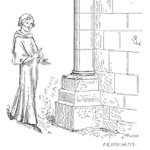
Bayesian Statistics and Sample Sizes
Abstract
Andre and Fred discussing the benefits of using what you know as you approach setting sample sizes using Bayesian statistics.
ᐅ Play Episode
Your Reliability Engineering Professional Development Site

Andre and Fred discussing the benefits of using what you know as you approach setting sample sizes using Bayesian statistics.
ᐅ Play Episode
by Andre Kleyner Leave a Comment

Andre and Fred discussing durability. Is it the same, a subset, or superset of reliability?
ᐅ Play Episode
by James Kovacevic Leave a Comment

This episode is based upon the workforce survey conducted by plantservices.com back in 2015 and now again in 2017. These surveys were done to know more about the workforce concerning issues that the professionals face during a change in technology, media, and external environment. These surveys are actually to help industry leaders and managers to get a better insight about their concerns regarding recruitment, training, and finding career opportunities. In this survey the respondents were divided into groups but most of the respondents lay in two major categories—Boomers were 49.8% and Generation X at 39.3%– based on the generational distinction.
ᐅ Play Episode

James and Fred discussing a better way to set stocking levels of spares.
ᐅ Play Episode
by Tim Rodgers Leave a Comment

Fred interviews Les Warrington a consultant about his background and ongoing work in reliability engineering.

James and Fred discussing dealing with the data we gather.
ᐅ Play Episode
by Fred Schenkelberg Leave a Comment

A reasonable model helps you make informed decisions. A simple reliability block diagram often provides the insights your team needs to prioritize and achieve the desired reliability performance. Let’s create, populate, and use RBDs effectively.
RBDs comprise a few simple elements and arrangements yet can describe a wide range of products and systems. There are a few assumptions to remember and a few basic ways to create a useful model for your system. [Read more…]
by James Kovacevic Leave a Comment

Now as a maintenance and reliability engineer, you need to come up with some tools to help you do this asset criticality activity. The heat maps are a good way as they include the asset hierarchy of the organization along with the budget details and other related information. You rank every system in the map by creating matrices that have different illustrations—usually red dots for critical ones and so on—to allow you to focus on specific factors and the determine the consequences if those assets fail. In order to do this, stakeholders, plant maintenance staff and concerned officials need to interact as it leads to right answers by asking the right questions and addressing the right issues in a right way. This is done by cascading everything from the corporate level to the site level.
ᐅ Play Episode

Adam and Fred discussing a few of the common reliability metrics.
ᐅ Play Episode
by Adam Bahret Leave a Comment

Adam and Fred discussing the shift from just a checklist mentality to something better.
ᐅ Play Episode
by James Kovacevic Leave a Comment

This episode is dedicated to the High Impact Learning that is not limited to just the information you are provided within the classrooms. It meant you have to truly learn about something by actually applying what you have acquired in a learning program so that you can deliver the desired results for your organization. The main focus here is to practically implement the course material for better understanding purposes. This can be done by promoting the activity-based learning in the organizations. Then it becomes a true process where you are doing performance-based work rather than just gaining bookish knowledge.
ᐅ Play Episode
by Adam Bahret Leave a Comment

Adam and Fred discussing how to change the way processes are used to implement reliability tools so the results drive product change.
ᐅ Play Episode

Fred interviews Lance Fiondella about his work teaching reliability engineering concepts for practical use in software and an open source software modeling tool.

Kirk and Fred discussing the question many have, that is if margins are important, why not specify more strength in the product design?
ᐅ Play Episode
by James Kovacevic Leave a Comment

This episode is centered upon the failure mechanism that reliability engineers have to deal with in everyday work. Before we understand what a failure mechanism is, it is very important to know what is called a failure. A failure is a technically relative term that is used when the results are below the expectations. Now different people have different definitions of failure based on their own performance scales. The failure depends on the criteria of performance that you have set for a particular machine and when the machine falls short of generating that specific output, you call it a failure.
ᐅ Play Episode